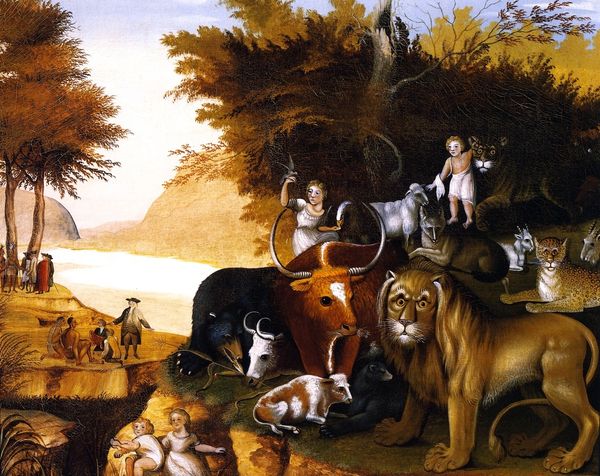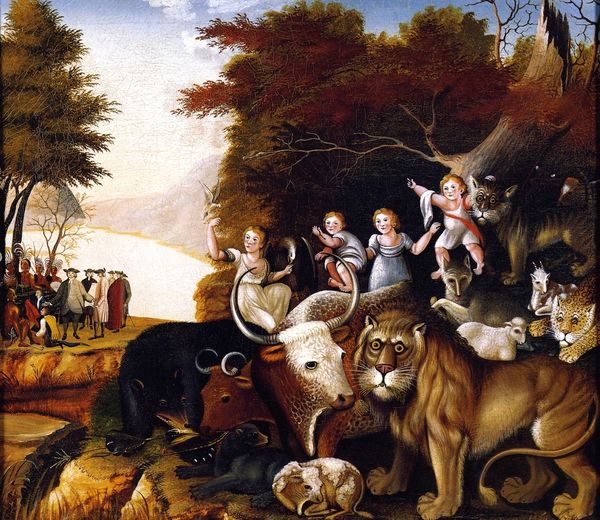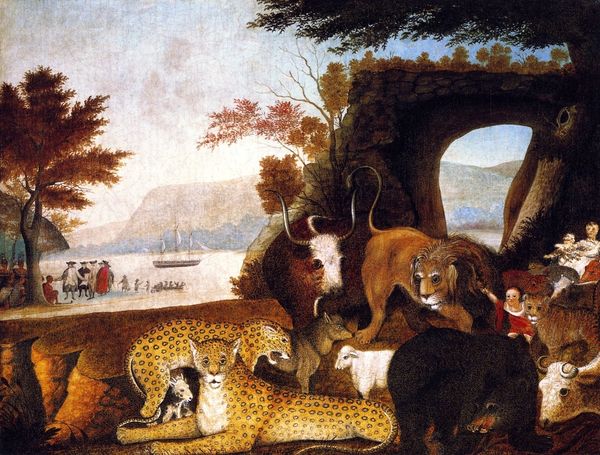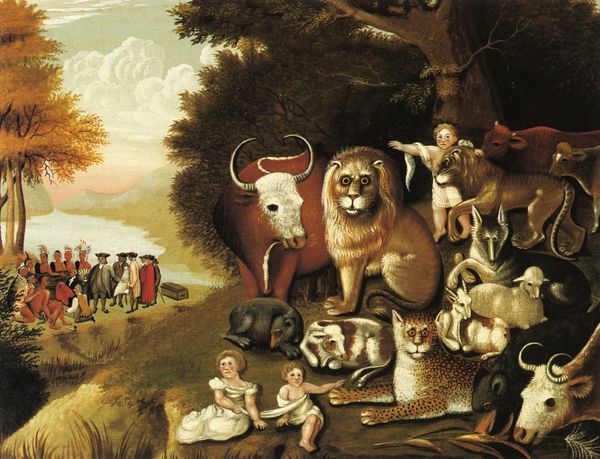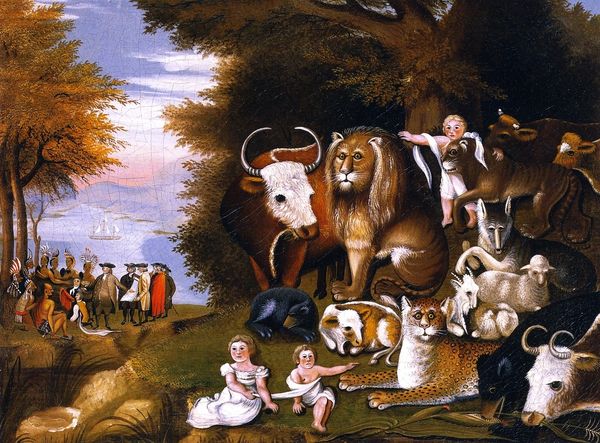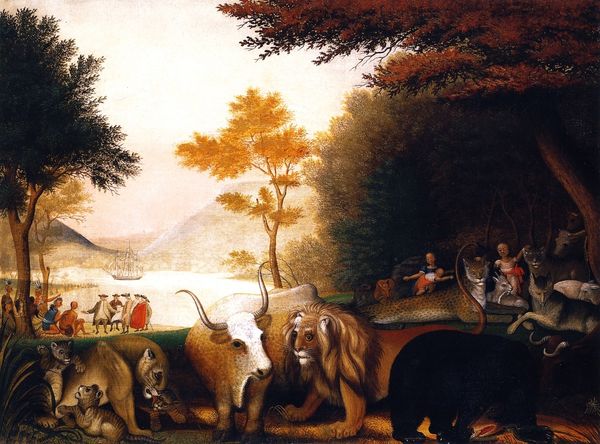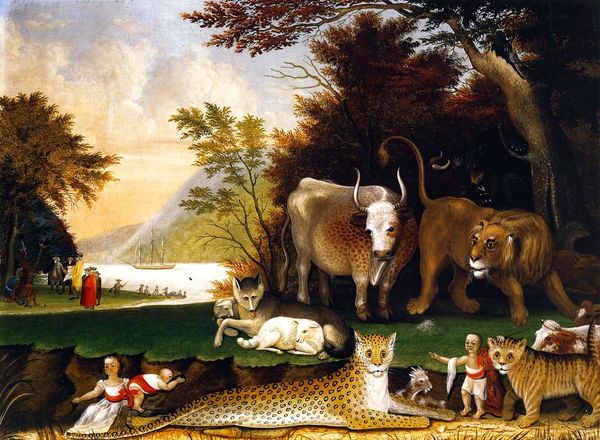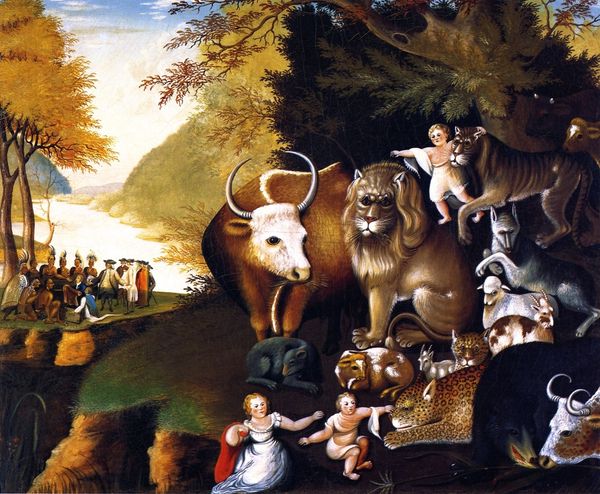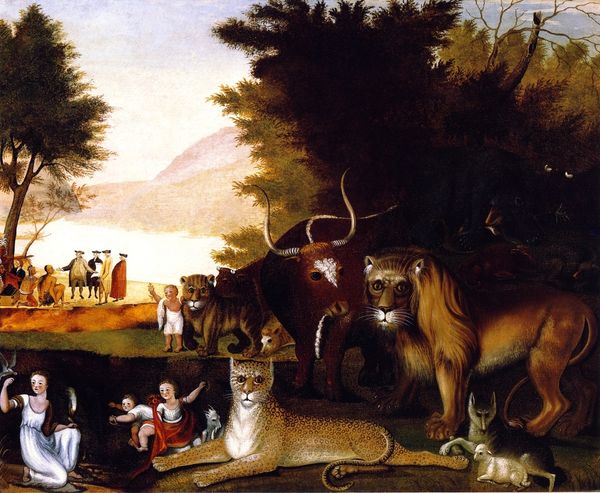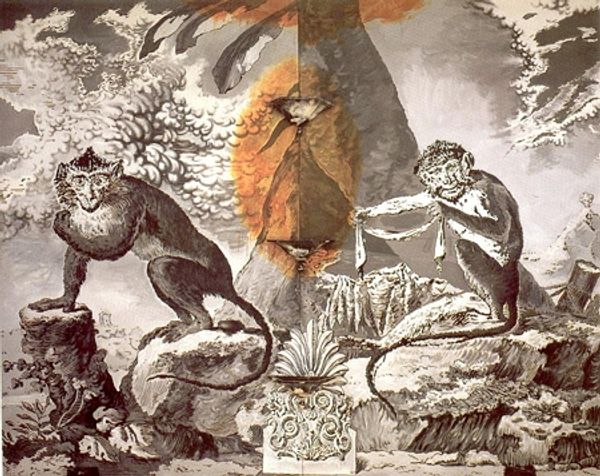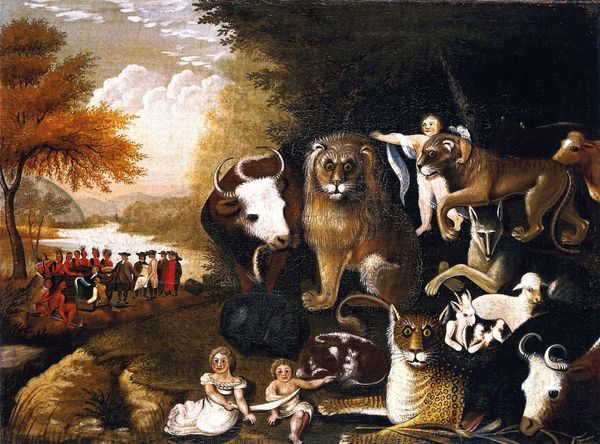
painting, oil-paint
#
allegory
#
painting
#
oil-paint
#
landscape
#
figuration
#
oil painting
#
romanticism
#
genre-painting
#
history-painting
Copyright: Public domain
Editor: Here we have Edward Hicks' "Peaceable Kingdom," created around 1845, using oil paint. The animals arrayed in the foreground are definitely striking. What strikes you first about it? Curator: The pictorial space intrigues me, primarily because it appears so compressed. Note how the foreground abruptly meets the background. The animals themselves appear organized not in a naturalistic arrangement, but according to a pre-determined schema, a clear visual program enacted through careful compositional choices. How would you describe the surface texture? Editor: Smooth, I think. It seems the artist tried to hide the brushstrokes to smooth out the texture of the artwork. I wonder how that relates to the painting's meaning? Curator: Exactly! Observe the way the light renders form, minimizing shadows to flatten the subjects. In doing so, Hicks highlights the relationships between the figures, not the figures as individual objects. Do you perceive an allegorical program at play? Editor: Perhaps something about harmony or utopia. It makes me curious to learn the history behind this painting. Curator: A valid point; yet I encourage you to analyze how the shapes of each figure echo each other, binding them visually as if variations of the same essential form, a family, almost. Do you see that unity being disrupted anywhere? Editor: Maybe in the background with that other scene? It is separated from the animal group. Curator: Precisely. That secondary scene injects a kind of visual friction that forces a semiotic reading of the image, directing us to the symbolism, rather than the purely aesthetic experience. Editor: I see what you mean now. By de-emphasizing depth and playing with shapes, Hicks draws our attention to the message, instead of just the image itself. I will definitely think more about surface texture and the organization of space going forward. Curator: Agreed, considering surface texture, depth, and visual cues can enrich any reading of visual art.
Comments
No comments
Be the first to comment and join the conversation on the ultimate creative platform.
